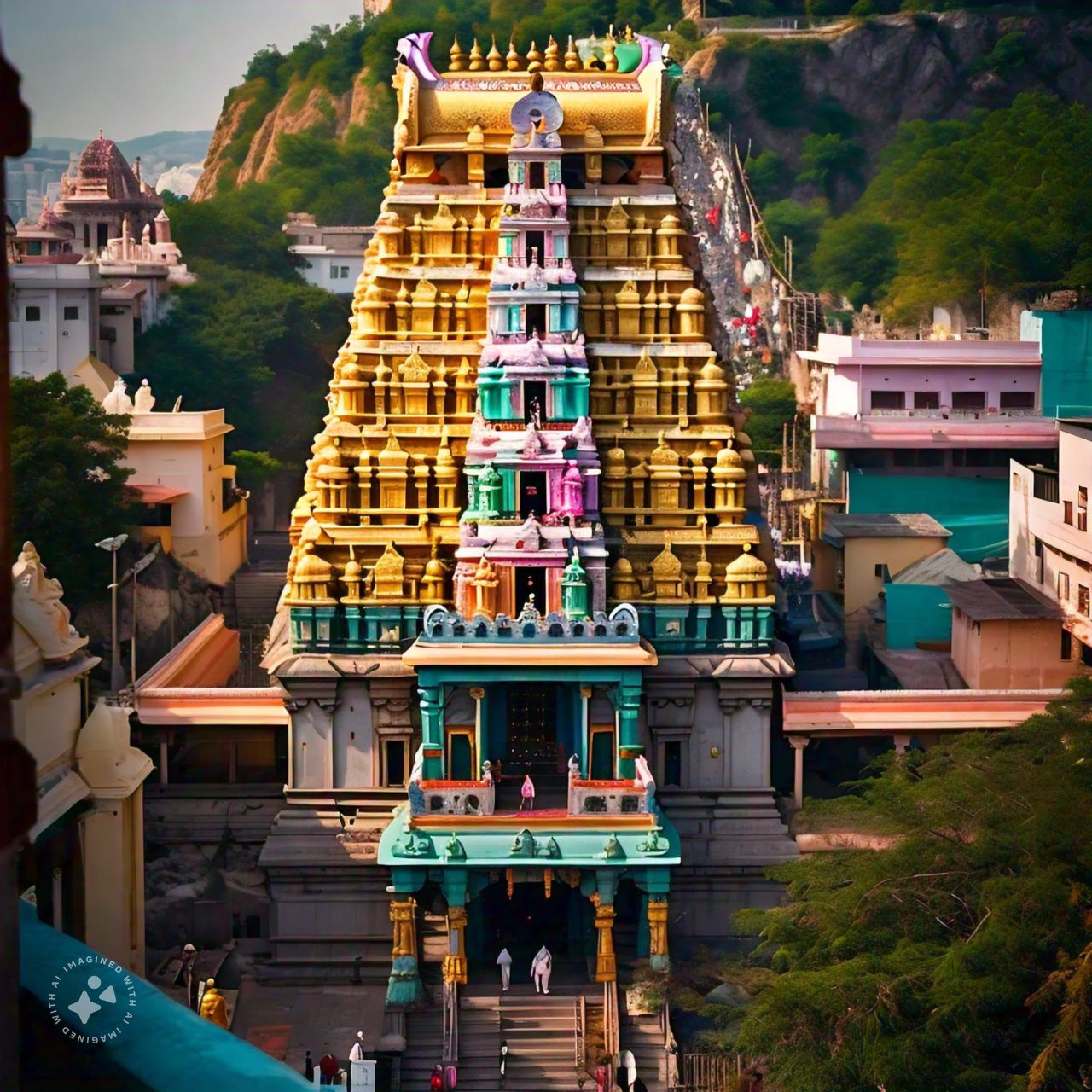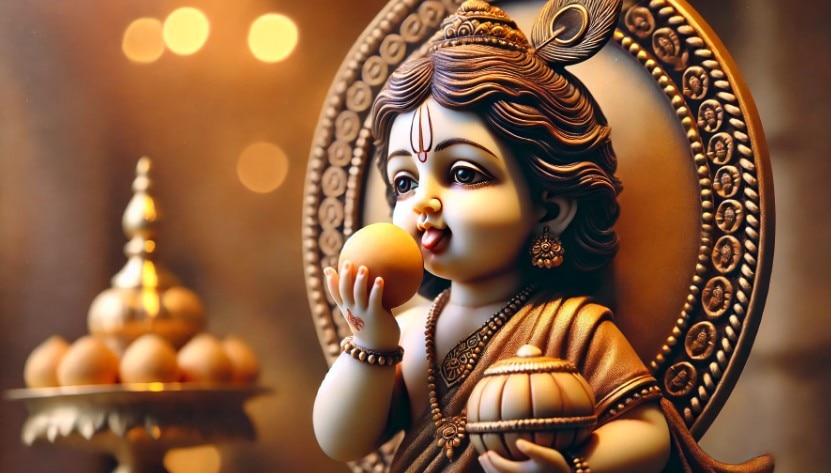The richest temple in the country, Tirupati Balaji, is located on the Tirumala hills in southern Andhra Pradesh. The idols installed in the temple sanctum are known by the names of Lord Venkatesh, Venkateswara, Tirupati Swami and Tirupati Balaji. There are three famous things about this temple so far. Firstly, it is one of the richest temples in India. Secondly, the number of devotees who come here every year is in crores and the amount offered is not less than this. The third and most important famous attraction is the Prasad Laddu of the temple. A symbol of spirituality, a stunning taste and a true manifestation of the grace of Lord Tirupati.
The fame of Tirupati’s prasad is under discussion. The famous laddus here have been exposed to be adulterated, and the adulteration is different, this laddu contains butter, fish oil, animal fat… After this information came out, the devotees of Tirupati were angry and demanded action against those responsible for the adulteration of laddus.
What is Accreditation?
After the incident came to light, whatever further action was taken was a matter for the future, but the question is, why are Laddu Prasads so popular in Tirupati? Where did they come from and how did it start? Let us tell you that the history of the famous Laddu Prasadam in Tirupati is very rich and ancient. Laddus Prasad is associated with the traditional rituals and devotional worship of the Tirumala Venkateswara Temple. In the temple of Tirupati Balaji, Laddus are offered to him as a special prasad and the devotees accept it with great reverence and faith. In fact, Panchmeva Prasad holds a very important place in all temples of Lord Vishnu. These Panchmeva are symbols of the five elements, five senses and five spirits. By mixing these, prasad was made and in this way, laddus started being included in prasad, which was made by mixing gram flour, ghee, sugar, cashews and raisins. The popularity and religious importance of this laddu made it an important part of the identity of the Tirupati temple.

What is the history of Laddu Prasadam?
The Laddu Prasadam of Tirupati is believed to have originated in the 18th century. However, there is no clear documentation indicating when laddus were adopted as special prasad. However, the huge devotion of people and its distribution in the form of prasadam is an age-old tradition. Most importantly, it has been a part of religious rituals performed inside temples for centuries and after daily pujas, it has been distributed on a large scale among the devotees. Its preparation process and ingredients have not undergone any changes over the centuries, which has allowed it to maintain a unique taste and identity among the people. In the last few decades, this laddu has gained a special stature among the people and has come to be known as Tirupati Naivedyya.
Tirupati Laddu has also been given the Geographical Indication – GI tag in 2009. This means that Tirupati Laddu has a unique identity and can only be made in the Tirumala Venkateswara Temple. The tag ensures that the uniqueness and quality of Tirupati Laddu is preserved.
These laddus are made by mixing special ingredients like gram flour (gram flour), sugar, ghee, cashew nuts, raisins, cardamom and other dry fruits. It is specially prepared in the temple kitchen using a traditional recipe called “Pottu”. Huge quantities of laddus are prepared every day. These are large in size, fragrant and have a special taste.
Talking about the relevance and importance of laddu, laddu is a symbol of auspiciousness and purity in the Indian society. Laddu is made by collecting small pieces or powder that are baked in ghee and hence it is also considered a symbol of unity and organization. Apart from this, Tirupati Laddus are considered to be very auspicious and holy. It is believed that consuming this prasadam brings the blessings of Lord Venkateswara and is a symbol of his blessings. Tirupati Laddu is not only a delicious prasadam but also has religious and cultural significance behind it. The belief behind accepting it is that by accepting it as prasad from Lord Balaji, all wishes will be fulfilled.

When child Krishna ate Bhog laddus
Apart from the religious importance of Prasad in Tirupati Balaji Temple, there are many folk legends associated with it which makes it even more special. The reason behind Prasad’s adoption of laddus is related to Lord Krishna’s childhood pastime in Dwapar Yuga. It is said that Baba Nand and mother Yashoda used to worship Lord Vishnu. Playful Kanhaiya was playing nearby. Meanwhile, Nand Baba picked up the plate of laddus and requested Lord Vishnu to offer it. When he opened his eyes, he saw Kanhaiya sitting on the puja platform and was happily eating the laddus. Nand Baba and Yashoda smiled as soon as they saw him before they remembered that Kanha had already eaten the laddus. Then Yashoda ji made laddus again. Nand Baba again offered food but this time Kanha also ate the laddus. This happened again and again. Nand Baba angrily scolded, “Kanha, wait a minute, let him bring the food offering and then you can take the prasad.” Then Kanha whispered, Baba, you are the one who calls me for offering again and again, and as soon as he said this, Krishna appeared in the four-armed form of Nand Baba and Yashoda Mata and said that you have prepared something very delicious for me. From now on, this laddu offering will be as precious to me as butter. From then on, butter and sugar were offered to little Krishna and laddus were offered to four-armed Krishna.
The four-armed image of Lord Krishna is established in the Tirupati temple, which is the eternal form of Lord Vishnu. Tirupati means the lord of the three worlds. He sits here with his wives Padma and Bhargavi in the form of Venkatesh Srinivas. Padma and Bhargavi are incarnations of Goddess Lakshmi, while Srinivas Venkatesh himself is Mahavishnu. There are other stories about laddus being accepted as Bhogs and Prasads in Tirupati.

Dispute between Lord Balaji and Goddess Lakshmi
According to a famous folk story, there was a dispute between Lord Venkateswara (Balaji) and Goddess Lakshmi over who got more food. Lord Venkateswara believed that he got the most treat, while Goddess Lakshmi said that I also got my share of the treat because she was the Goddess of wealth and without her, no offering could be made.
To resolve this dispute, both of them tested a devotee. First, he went to the house of a rich devotee, who prepared various dishes and offered them to her, but Lakshmi was not satisfied. Thereafter, he went to the house of a true devotee. There, the devotee made laddus by mixing the remaining flour at home with some fruits and nuts and fed it to him. Lord Balaji was immediately satisfied with this. Thereafter, he realized that laddus was his favorite indulgence.
Goddess Lakshmi herself created Prasad Ladus.
According to another story, once when the idol of Lord Venkateshwara was installed on the hills of Tirumala, the temple priests were in a dilemma as to what to offer to Lord Prasad, when an old mother came with a plate of the idol. She came with laddus in her hand and asked for the first offering. When the priests offered it and accepted it as prasad, they were shocked by its divine taste. When he wanted to ask the old mother something, he found that she was missing. It was believed at that time that Goddess Lakshmi herself helped in directing the prasad. There is also a legend that Lord Balaji himself taught the priests the method of making laddus. It is said that from then on, Laddus started being considered as a special Prasadam of Lord Venkateshwara and the tradition of distributing it to devotees started.
When Srinivas borrowed money from Kuber
There is a famous story that when Lord Venkateswara got married to Goddess Padmavati, he needed money to sustain the wedding. For this, he borrowed a sum of money from the God of Wealth, Kuber. It is believed that even today, Lord Venkateswara is on earth paying off this debt. This is the reason Lord Tirupati Balaji accepts donations from his devotees and fills his hundi (piggy bank). Laddu Prasadam is associated with this debt as it is given to the devotees as a form of blessing from the Supreme Lord and in return, the devotees donate according to their devotion, thereby enabling Lord Venkateswara to pay off the debt.
Follow us On Social Media Google News and Twitter/X

